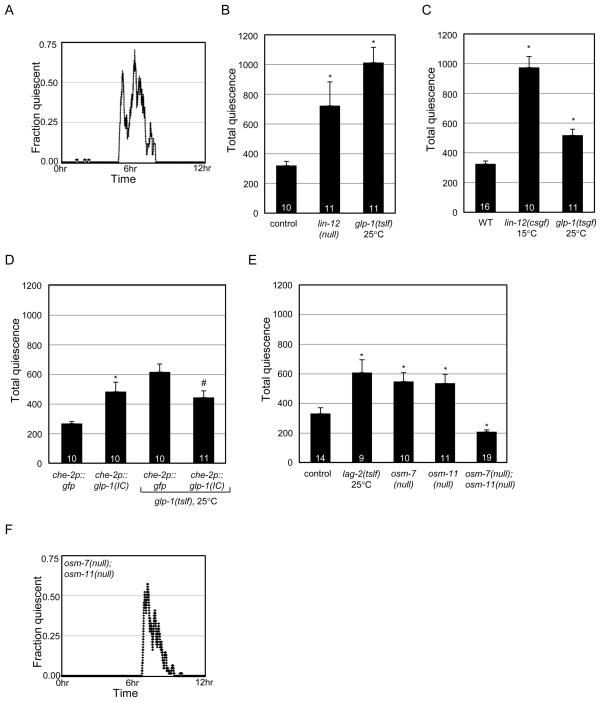Figure 4.
Notch signaling regulates L4-to Adult molting quiescence. (A) Representative fractional quiescence graph. Mid-L4 animals exhibit L4/A molting lethargus quiescence for a few hours before adulthood. (B) Loss of LIN-12 receptor or decreased GLP-1 receptor function increased total L4/A quiescence. *p<0.02 vs. control (mgIs49; see Experimental Procedures for details). (C) Increased LIN-12 or GLP-1 function increased total L4/A molting quiescence. *p<10−4 vs. wild type (WT). (D) Increasing GLP-1 receptor activity in ciliated sensory neurons increased total L4/A quiescence in wild type animals (che-2p::glp-1(IC)). Expression of che-2p::glp-1(IC) transgene restored total quiescence in glp-1(tslf) animals to normal levels. *p<0.003 vs. che-2p::gfp. #p<0.02 vs. glp-1(tslf);che-2p::gfp. (E) Notch ligands/co-ligands regulate total L4/A quiescence. *p<0.002 vs. control (mgIs49; see Experimental Procedures for details). (F) Representative fractional quiescence graph of osm-7(null);osm-11(null) for comparison with (A) is presented. See Supplemental Methods 4 for details.

